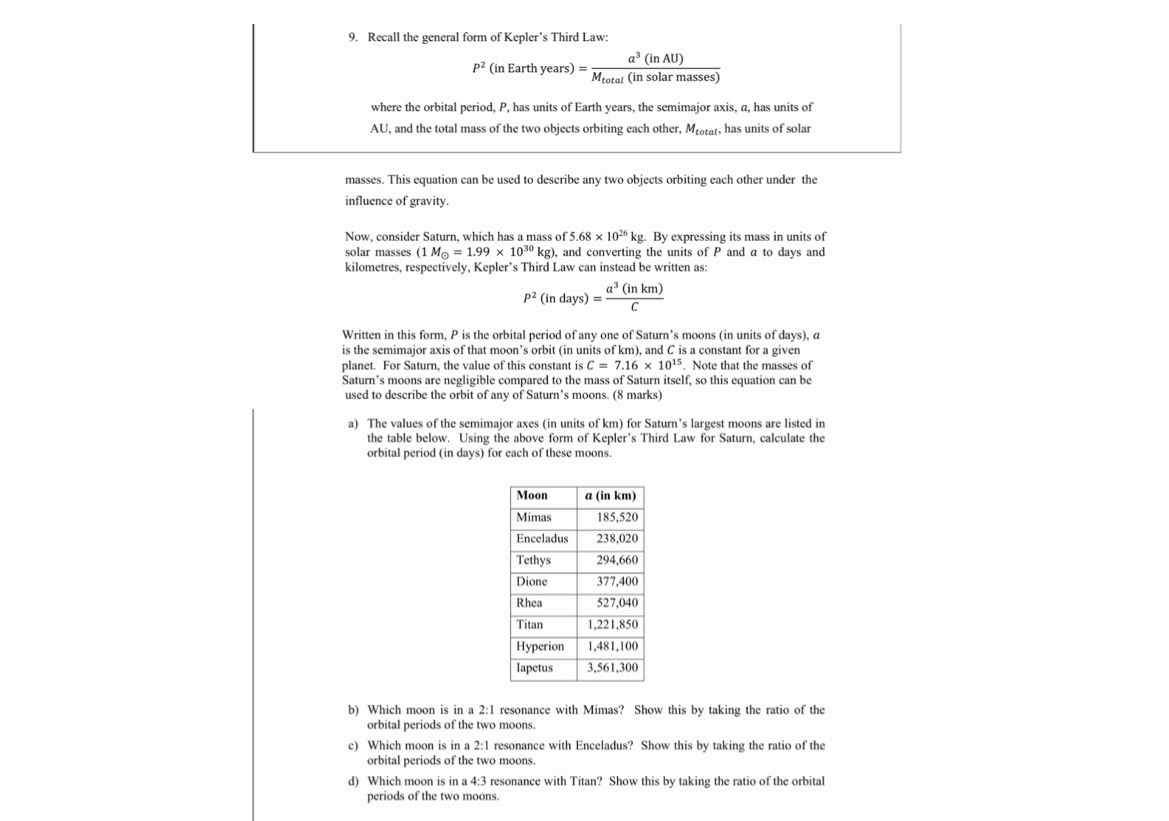Answered step by step
Verified Expert Solution
Question
1 Approved Answer
9. Recall the general form of Kepler's Third Law: a' (in AU) pz (in Earth years) - Mtotal (in solar masses) where the orbital period,

Step by Step Solution
There are 3 Steps involved in it
Step: 1

Get Instant Access to Expert-Tailored Solutions
See step-by-step solutions with expert insights and AI powered tools for academic success
Step: 2

Step: 3

Ace Your Homework with AI
Get the answers you need in no time with our AI-driven, step-by-step assistance
Get Started


